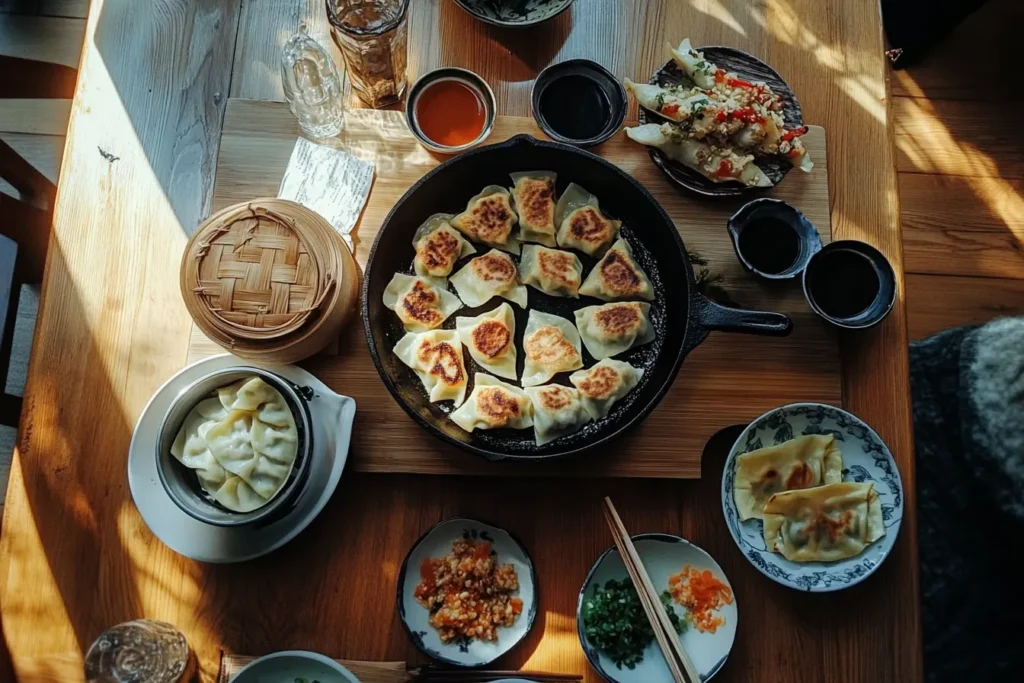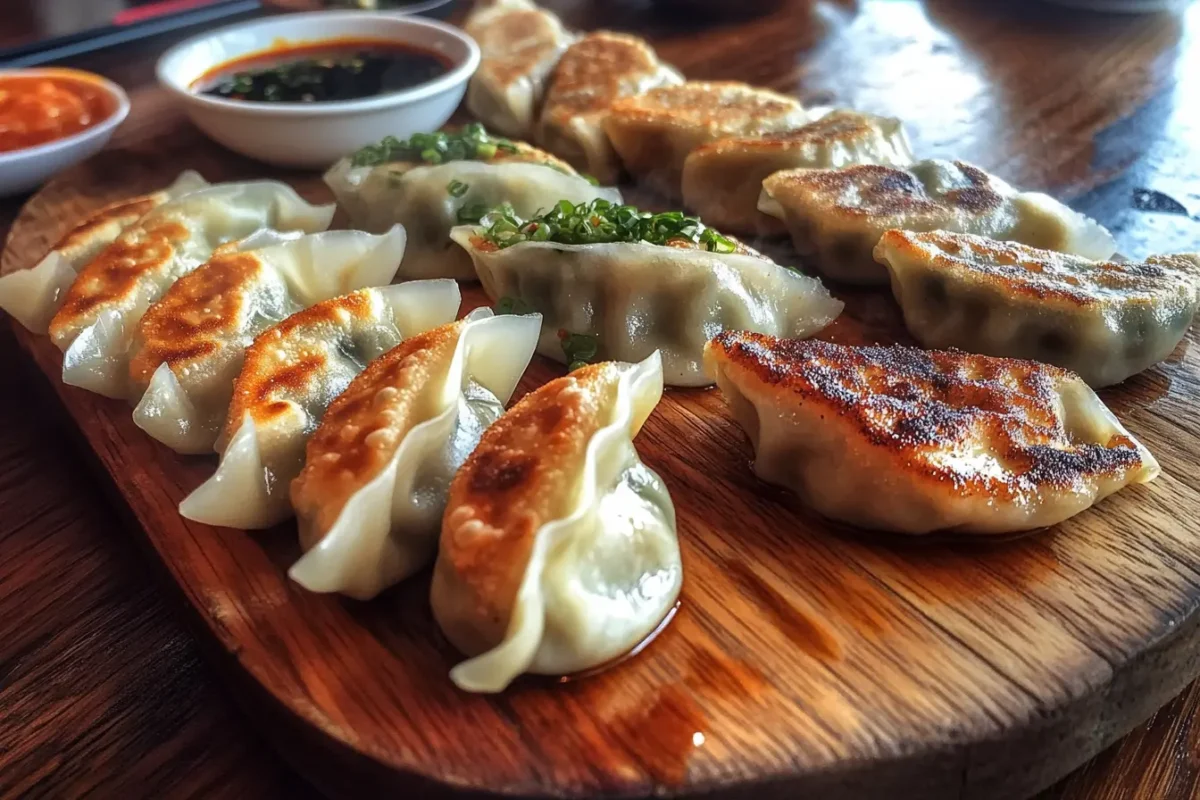Dumplings, a beloved comfort food across many cultures, come in all shapes, sizes, and cooking methods. Whether you’re steaming, boiling, frying, or baking them, the question often arises: Do you cook dumplings covered or uncovered? It’s not just a trivial detail—this decision influences the texture, flavor, and overall outcome of your dish. In this article, we’ll explore the science, traditions, and tips behind cooking dumplings both ways to help you perfect your culinary skills.
Let’s start with the basics and uncover (or cover) the secrets to cooking dumplings to perfection.
Understanding the Basics of Cooking Dumplings
What Are Dumplings?
Dumplings are more than just a dish—they’re a culinary tradition. From Chinese jiaozi to Italian ravioli, these dough-wrapped delights are as versatile as they are delicious. At their core, dumplings consist of a flour-based dough filled with various ingredients like meat, vegetables, or sweet fillings.
The magic lies in how you cook them. Dumplings can be steamed for a soft, pillowy texture, boiled for a chewy bite, or fried for a crispy exterior. Each method brings out a unique flavor and feel, making dumplings adaptable to different tastes and occasions.
Covered vs. Uncovered Cooking: An Overview
When it comes to cooking dumplings, the age-old question arises: Should you cover them or not? Covering dumplings traps steam and helps retain moisture, ideal for methods like boiling or steaming. On the other hand, leaving them uncovered allows moisture to escape, creating a crisp, browned surface—perfect for frying.
The method you choose often depends on the recipe, the type of dumpling, and personal preference. If you want soft, juicy dumplings, covering them might be your best bet. Prefer a crispy, golden texture? Opt for uncovered cooking. Either way, the choice is yours, but understanding these basics is key to mastering your dumpling game.
The Science of Cooking Dumplings Covered vs. Uncovered
How Covering Impacts Cooking
When you cover dumplings during cooking, you create a micro-environment where steam builds up, enveloping the dumplings in moist heat. This method works wonders for retaining the juiciness of fillings and keeping the dough soft and tender. Steamed dumplings, such as Chinese baozi, rely on this approach to achieve their signature pillowy texture.
However, the science doesn’t stop there. Covering dumplings helps maintain consistent heat, which is critical for even cooking. The steam ensures that heat penetrates every part of the dumpling, cooking the filling thoroughly without drying out the dough. If you’ve ever wondered, Do you cook dumplings covered or uncovered?, consider that covering them often produces a melt-in-your-mouth consistency.
The Role of Uncovering in Dumpling Cooking
Cooking dumplings uncovered is a whole different game. Without a lid to trap the steam, moisture escapes, leaving behind a drier environment. This is perfect for achieving a crisp, golden exterior, particularly for pan-fried dumplings like potstickers. The uncovered method allows direct contact with heat, creating a delectable caramelized crust.
Uncovering dumplings also allows excess water to evaporate, ensuring that the final dish isn’t soggy. For instance, when frying or baking, leaving the lid off prevents the dumplings from becoming overly moist. That said, timing is everything. Too much exposure to heat can dry out the dumplings entirely, leaving you with a less-than-ideal texture.
Comparing Results: Covered vs. Uncovered Dumplings

Texture and Flavor Differences
Texture plays a starring role in the dumpling debate. Covered dumplings are undeniably softer and more delicate, ideal for recipes requiring a tender bite. Boiled dumplings cooked with the lid on retain more moisture, resulting in a smoother, silkier texture.
In contrast, dumplings cooked uncovered are all about that crisp factor. The lack of steam allows the dough to brown beautifully, giving you a satisfying crunch with every bite. For example, gyoza and potstickers are renowned for their combination of a crispy base and tender upper layer.
Interestingly, flavor nuances also change based on your cooking method. Covering dumplings can amplify the rich, savory notes of the filling, while uncovered dumplings develop a slightly nutty, toasted flavor from the browned dough.
Cooking Time and Consistency
The choice between covering and uncovering doesn’t just affect texture; it impacts cooking time too. Covered dumplings generally cook faster, thanks to the trapped heat and steam. This can be a lifesaver if you’re in a hurry or cooking for a crowd.
On the flip side, uncovered methods might take longer but offer greater control over browning and texture. For home cooks wondering, Do you cook dumplings covered or uncovered?, understanding how each method affects time and consistency can help you choose the right technique for your dish.
For more tips on creating delicious dumplings, check out the Bisquick Dumpling Recipe for a quick and easy option that pairs well with various cooking methods.
Tips for Perfect Dumplings: Covered and Uncovered Methods
Tips for Covered Cooking
Cooking dumplings with a lid can make a big difference if you want them soft and moist. To do this right, avoid lifting the lid too often. When you open it, steam escapes, and the heat drops, which can lead to uneven cooking. Instead, keep the lid on and let the dumplings cook fully.
Another pro tip is to ensure there’s enough liquid in the pot or pan when steaming or boiling. If the liquid runs too low, the dumplings can stick or dry out, defeating the purpose of covered cooking. Remember, soft, tender dumplings are all about maintaining the right moisture level. And, if you’re wondering, Do you cook dumplings covered or uncovered?, this method is ideal for recipes like steamed baozi or boiled pierogi.
Tips for Uncovered Cooking
When frying or baking dumplings, keeping them uncovered is the way to go. This allows moisture to escape, ensuring your dumplings get that irresistible crispy finish. For frying, use a non-stick pan and heat the oil before adding the dumplings. A small splash of water followed by a lid during the initial cooking phase can help steam the filling before finishing uncovered for a crunchy crust.
Additionally, keep an eye on the heat. High heat can scorch the dumplings before they’re cooked through, while too low a temperature might result in a soggy texture. Balancing heat and timing is key to perfect uncovered dumplings.
Regional and Cultural Differences in Cooking Dumplings

Asian Variations: A Closer Look
Dumpling cooking methods often reflect rich cultural traditions. In China, dumplings like jiaozi are typically boiled or steamed with the lid on to retain their soft, chewy texture. Similarly, xiao long bao (soup dumplings) rely on covered steaming to lock in the flavorful broth.
In Japan, gyoza are a favorite that starts with frying the dumplings uncovered until golden brown, followed by a quick steam under a lid to cook the filling. This combination of techniques delivers both a crispy bottom and a tender top.
In Korea, mandu are often boiled or steamed, with covered cooking ensuring that the dumpling wrapper stays soft while the filling cooks evenly. Each culture’s approach answers the question, Do you cook dumplings covered or uncovered?, in a way that enhances the unique flavors of their cuisine.
Global Perspectives on Dumpling Cooking
European dumplings bring their own flair to the table. Pierogi are commonly boiled first, then pan-fried uncovered to achieve a delightful golden crust. Meanwhile, Italian ravioli are boiled uncovered to ensure they remain al dente without over-softening.
These regional differences highlight how cooking methods can shape both the taste and texture of dumplings. Whether you choose to cook covered or uncovered often depends on the tradition and the desired result.
For more inspiration, consider Exploring dumpling recipes from different cultures on BBC Good Food.
Professional Chefs’ Opinions on Covering Dumplings
Insights from Culinary Experts
When it comes to the classic debate, Do you cook dumplings covered or uncovered?, professional chefs offer diverse opinions. Many agree that the answer depends on the type of dumpling and the desired result. For instance, chefs preparing soup-filled dumplings or baozi often prefer covered cooking. According to them, trapping steam not only ensures thorough cooking but also preserves the juicy fillings and delicate dough.
On the other hand, chefs specializing in gyoza or potstickers emphasize the benefits of uncovered cooking. Leaving dumplings exposed to direct heat creates a perfectly crispy base, which they consider a hallmark of these dishes. It’s a balancing act of texture and flavor, requiring careful control of heat and timing.
Chef’s Tips for Home Cooks
Professional chefs often encourage home cooks to experiment with both methods. For covered cooking, they recommend using a tight-fitting lid to maintain a consistent environment. When frying uncovered, they suggest adding a splash of water during the initial phase to create steam, then finishing the dumplings uncovered for that golden-brown crust.
Whether you’re a novice or an experienced cook, these tips can help you master dumplings of all kinds. Remember, the key is to adapt your technique based on the type of dumpling and the result you’re aiming for.
The Best Cooking Method for Each Dumpling Type
Steamed Dumplings: Covered or Uncovered?
For steamed dumplings like siu mai or xiao long bao, covering is the go-to method. Steam trapped under a lid ensures the dough remains soft and fully cooked, while the filling retains its moisture. If you’re wondering, Do you cook dumplings covered or uncovered?, this is the method that guarantees melt-in-your-mouth results.
Pro tip: Place dumplings on parchment paper or a cabbage leaf to prevent sticking. This also helps maintain their shape and texture during steaming.
Fried Dumplings: Covered or Uncovered?
Fried dumplings are all about striking the perfect balance between crispy and tender. Start by frying them uncovered until the bottom is golden brown, then add a splash of water and cover the pan briefly. This hybrid method creates steam to cook the filling while preserving the dumplings’ crunch.
For smaller, delicate dumplings like potstickers, this method works wonders. The uncovered step at the end ensures they stay crispy, offering that satisfying contrast with the tender filling.
By understanding which cooking method works best for each dumpling type, you’ll confidently navigate this culinary question. Let me know when you’re ready for the FAQs and final section!
FAQs on Cooking Dumplings
Does Covering Dumplings Make Them Softer?
Yes, covering dumplings while cooking helps retain moisture, making them softer and more tender. This method works particularly well for steamed or boiled dumplings. By trapping steam under a lid, the dough absorbs moisture, resulting in a delicate texture. If you’re debating Do you cook dumplings covered or uncovered?, covering is the answer for soft, pillowy results.
Can You Cook Dumplings Without Covering Them?
Absolutely! Cooking dumplings uncovered is ideal for fried or baked styles. The absence of a lid allows excess moisture to escape, creating a crispy, golden exterior. However, it’s essential to monitor the heat closely to avoid drying out the dumplings.
What Is the Best Way to Steam Dumplings?
The best way to steam dumplings is to place them on parchment paper or a lightly oiled surface in a steamer. Always cover the steamer with a tight-fitting lid to ensure the steam cooks the dumplings evenly. This method is perfect for dishes like xiao long bao.
Why Do My Dumplings Turn Out Dry?
Dry dumplings often result from using too little liquid or overcooking. For soft dumplings, ensure enough water or broth is in the pot and avoid cooking them longer than the recipe recommends.
Final Thoughts on Cooking Dumplings
So, Do you cook dumplings covered or uncovered? The answer largely depends on the type of dumpling you’re making and the texture you want to achieve. Covered methods like steaming or boiling are perfect for soft, juicy dumplings, while uncovered techniques like frying create a crispy, golden finish.
Understanding the nuances of these methods allows you to tailor your cooking style to each dumpling type. From tender steamed baozi to crunchy potstickers, each method brings out unique textures and flavors.
Experimentation is key! Try both covered and uncovered methods to discover what works best for your favorite recipes. Whether you’re steaming, boiling, frying, or baking, the joy of cooking dumplings lies in their versatility and the delicious results.
For more inspiration, explore Bisquick Dumpling Recipe to try a quick and easy take on dumpling-making. Happy cooking!

